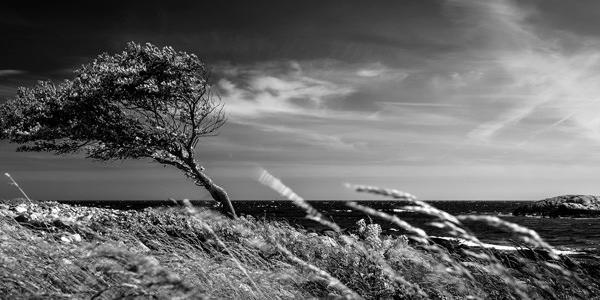There is a ruined old farmhouse in Northumberland called Blawearie. The name, apparently, means “tired of the wind”. Living on the North Yorkshire coast, I understand the sentiment behind this name and use if frequently, when day after day there is a relentless wind that rattles my bones, frazzles my energy and is a real battle to walk in sometimes.
For two years now, as a culture, we have battled with a pandemic that has threatened our lives in so many ways. And I recognise that, during this time, I have had an underlying, sometimes subtle, sometimes blatant fear and anxiety. When I reflected on this the fear and anxiety list was seemingly endless: Fear of going into the supermarket, fear of people without masks, fear of being near anyone, fear of catching the virus, fear of my family catching the virus… and it has had an impact. I didn’t notice it at first, but as I tune into the wisdom of my body, it is there, sitting in the background.
It wasn’t until the latest round of shocking world news threatening humanitarian disaster, that I fully recognised that I was becoming tired of being fearful. I am going to invent a new word, inspired by the folks that lived in the Blaewearie farmhouse, ‘fearwearie’. Because I am just that. Weary of fear, and weary of the needless suffering we are aware of in the world, and just like the wind, it is rattling my bones and frazzling my energy.
The Harvard Gazette recently reported on the results of some research conducted by Harvard Medical School on the impact of living with the pandemic whether you had caught it or not. It says, “Our study demonstrates an example of how the pandemic has impacted human health beyond the effects directly caused by the virus itself.” It is recognised how people have been affected by social and economic disruptions. Common symptoms reported in the research since the start of the pandemic include: psychological distress, fatigue and brain fog including among people not directly infected with Covid. Loggia, who was involved in the study, acknowledges a role of neuroinflammation in the symptoms experienced by many during the pandemic, caused by the stresses and fears involved in the changing ways of living and threats. In other words, maybe we are all ‘fearwearie’. He indicates that stress relieving activities are key to relieving these symptoms. We know from the myriad studies on the impact of mindfulness that have emerged over the last few years, that there is evidence to suggest that Mindfulness has an impact on reducing stress levels and cortisol, as does exercise, mindful walking and movement and practicing compassion.
Certainly, throughout the pandemic my Mindfulness practices, walking in nature and mindful movement were integral to my wellbeing. At the Mindfulness Association we offered everyone the opportunity to practice Mindfulness meditation twice daily with one of our tutors online via Zoom. Feedback we have received leans towards a significant benefit experienced by the participants who reported that the meditations helped them cope with their isolating and sometimes fearful situations.
On reflection, I also recognise during this time that most of my fears were completely unfounded. They were the manifestation of my mind. Yes, I couldn’t change the external circumstances that were happening around me, but I am aware that a lot of the time I succumbed to a spiral of fear and anxiety, and this led to feelings of stress. Rob Nairn points out that “pain is inevitable, but suffering is optional”. He says that our actual problems are 10% pain and 90% suffering, caused by the mind.
As if the pandemic wasn’t enough for us to cope with, we are now with the current disturbing situation in the world, standing by and watching the suffering of others. As the atrocities unfold, I notice a new set of fears arising. The threat of the impact of war on the world, on prices, availability of products and a change of way of life. Having learned how my mind operates and creates worries that may never arise, I make the aspiration to use my practice to be different. One of the insights that has arisen for me recently is a wish that I had appreciated life as it was before a little more. I recognise a wish to turn the clock back a few years.
I am aware from my practice that the gap between how I wish life to be and the reality of how life is can be quite painful so I have a new resolution and intention, because there are many things I cannot change but yet, through Mindfulness and Compassion practice I can change how I respond to what I am experiencing and not buy into the stories that my mind tells me sometimes.
I recognise that every day I need to appreciate everything I have now in this moment and make each moment of joy count. Rick Hanson developed a meditation practice called ‘taking in the good’. He encourages us to notice the positive events that occur in our lives, no matter how small, like the taste of good coffee, hearing birdsong or enjoying the sunshine in a blue sky. He says that when we notice something good, we should pause and let ourselves feel good about it for a few minutes, several times a day. Recently I have been doing this practice more and more, to the point that I noticed how I felt when I had a flat tyre at a really inconvenient time. I let go of any initial irritation straight away as I took myself off for a coffee in the sunshine by the sea – and appreciated every moment. It really didn’t matter about the tyre. It really didn’t, and in that moment, I appreciated the benefit of my Mindfulness practice.
Compassion is also important here because, whilst I recognise that initially being kind to myself was something quite foreign to me, I have cultivated self-compassion to the point that it is more automatic. When we recognise, we are going through a difficult time, a gesture of self-kindness may help reduce stress and allow space for some calm to arise.
Our minds can be very powerful at times and experiencing fear and anxiety is a common experience amongst us human beings. I also notice that some of my thoughts, emotions and fears are unfounded and just a manifestation of my mind going into overdrive. But through our Mindfulness and Compassion practice we have the ability to notice this and choose to respond differently, rather than our usual habitual behaviour. When we learn to face our fears and accept what is happening, we have the opportunity to shape our response rather than be ruled by our thoughts and feelings. And we can only do this through sustained practice.
There is a phrase I like to use – Real but not True, which comes from Tibetan teacher, Tsoknyi Rinpoche. He says that whilst our thoughts are really happening and we feel the impact of them through sensations in the body and feelings, they are only representations in our mind and not the actual experience of this living moment. So whilst I might be feeling fearwearie I make an effort to know where I am adding to my own unfounded feelings of fear, by asking myself if it is true.
Meditation Challenge
When you next notice a sense of fearwearie setting in, you might like to try a Mindfulness practice such as taking in the good or self-compassion. Mindful movement or mindful walking can also help us to reduce cortisol in the body, thus reducing the risk of us being affected by the neuroinflammation Loggia describes and the symptoms that can result from living in stressful situations. You might also want to become more aware of your fears and ask yourself whether they are true and be kind to yourself in the process.
Take care everyone
Jacky
Jacky will be sharing a day of practice – where we give ourselves permission to fill ourselves up with goodness. Fill up your cup practice day is on 18th April. She will also be running Level 2 Compassion Through Movement starting 17th May.
Jacky has contributed a chapter to the Mindful Heroes Book entitled “Turning Empathic Distress into Compassion – A Hero’s Journey for Family Carers”. You can watch an extract from the chapter where she talks about the results of her MSc Studies in Mindfulness on Compassion & Family Carers. You can download a free sample of Jacky’s chapter here.
Mindfulness Level One and Compassion Level Two are the key courses referred to in this blog.
Links and References
https://www.rickhanson.net/take-in-the-good/
Mindfulness Association Level 2 Compassion Manual.


